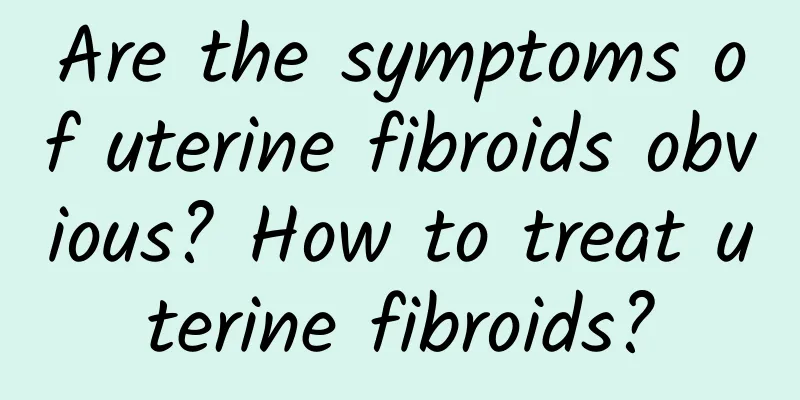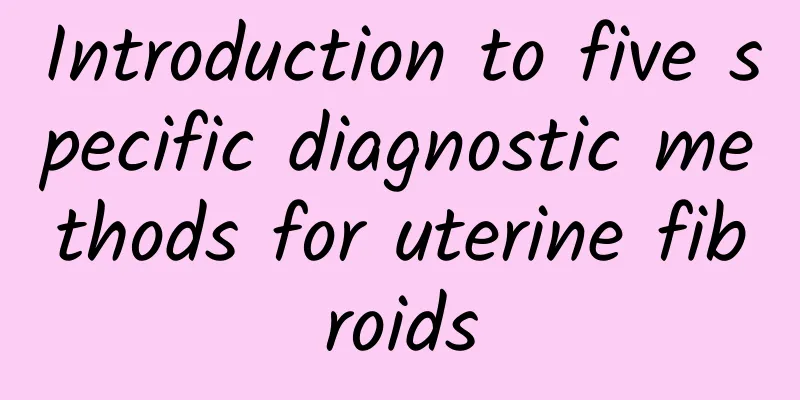Are the symptoms of uterine fibroids obvious? How to treat uterine fibroids?

|
Uterine fibroids are the main culprit of female infertility among gynecological diseases. Its existence is often the most worrying thing for female friends, because uterine fibroids are also one of the common gynecological diseases. So what are the symptoms of uterine fibroids? The following is an expert's answer to your question. Most patients have no obvious symptoms and are only occasionally found during a pelvic examination. If symptoms occur, it is closely related to the location, growth rate and degeneration of the fibroids. Abdominal mass: Abdominal distension, swelling in the lower abdomen, accompanied by a feeling of falling. Menstrual changes: The most common symptoms are shortened menstrual cycles, increased menstrual flow, prolonged menstruation, irregular vaginal bleeding, etc. Second, pain: Generally, patients do not have abdominal pain, but often have lower abdominal swelling, back pain, etc. When the subserosal fibroid pedicle is twisted, acute abdominal pain may occur, the fibroid changes red, the abdominal pain is severe, and there is a fever. Increased vaginal discharge: Increased vaginal discharge, sometimes with a large amount of pus and necrotic tissue discharged with an odor. Three compression symptoms: When the fibroid grows forward or backward, it can compress the bladder, urethra or rectum, causing frequent urination, dysuria, urinary retention or constipation. When the fibroid grows to both sides, it will form a broad ligament fibroid, compressing the ureter or hydronephrosis; if it compresses the pelvic blood vessels and lymphatic vessels, it will cause lower limb edema. 4. Hypoglycemia: Hypoglycemia with uterine fibroids is also rare. The main symptoms are low fasting blood sugar, loss of consciousness, shock, and the symptoms completely disappear after glucose injection. After tumor resection, the symptoms of hypoglycemia completely disappear. Five infertility: Fibroids compress the fallopian tubes, causing them to twist, or deform the uterine cavity, thus preventing the fertilized egg from implanting and leading to infertility. Secondary anemia: If the patient has excessive menstruation for a long time, it may lead to secondary anemia, general fatigue, pale complexion, shortness of breath, palpitations and other symptoms. The above are the symptoms of uterine fibroids. I believe that your understanding of uterine fibroids will also be deepened after reading. Infertility is the most harmful of the symptoms of uterine fibroids, so early protection and treatment are essential. We should pay attention to uterine fibroids, and early patients should also cooperate with early treatment. |
>>: Symptoms of uterine fibroids: Can uterine fibroids cause acute abdominal pain?
Recommend
What should women pay attention to after abortion
At present, more and more women are having painle...
Ovarian cysts can harm women
Among gynecological diseases, ovarian cysts are o...
Cervical erosion is often made into a big deal
Cervical erosion is a common gynecological diseas...
Can acupuncture be used to treat irregular menstruation?
Acupuncture is one of the external treatment meth...
What are the early symptoms of miscarriage? There are these 3 major symptoms
You should pay attention to all aspects of your b...
What is the cause of cervical hypertrophy?
Cervical hypertrophy is a common gynecological di...
What psychological concerns do patients with vulvar leukoplakia have?
Vulvar leukoplakia is a common gynecological dise...
Why do I get constipated when I take medicine for uterine fibroids? Will I bleed when I take medicine for uterine fibroids?
Why do I get constipated when I take medicine for...
What are the causes of bacterial vaginosis?
Bacterial vaginitis is a common disease among wom...
How long does the menstrual period last for lochia to be discharged?
How long does the menstrual period last for lochi...
What are the dangers of cervical hypertrophy?
What are the dangers of cervical hypertrophy? Wha...
Eat light and slim without gaining weight: Olive oil noodles
Obesity is the public enemy. If you want to lose ...
What to do if there is pelvic fluid accumulation after egg retrieval
What should I do if there is pelvic fluid accumul...
Can menstrual disorders be regulated?
Can menstrual disorders be regulated? Under norma...
What are the early symptoms of vulvar leukoplakia
Understanding its symptoms is the best way to cur...









